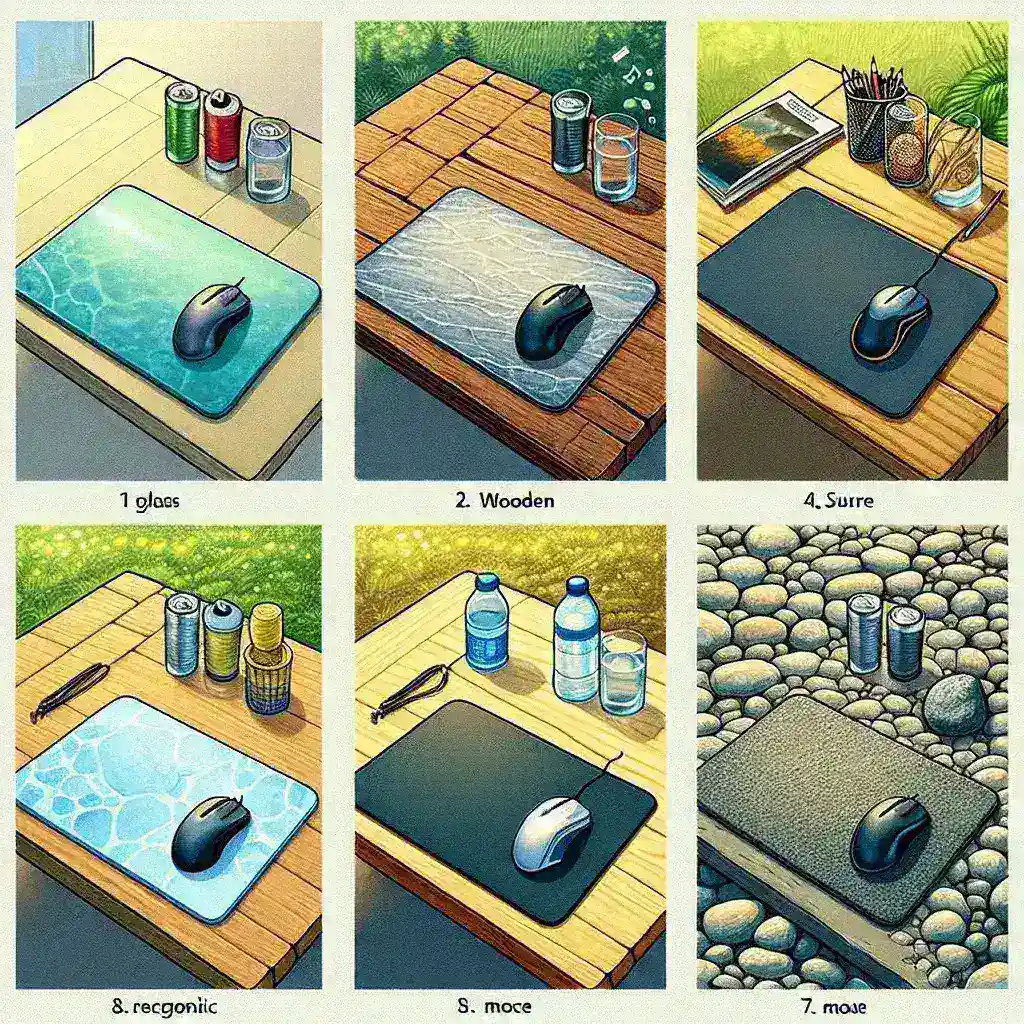Can I Use a Mouse Pad on Any Surface?
Mouse pads are ubiquitous accessories for anyone using a computer, providing a smoother and more precise tracking surface for the mouse. However, a common question arises: Can I use a mouse pad on any surface? The answer is not as straightforward as it seems, as the effectiveness of a mouse pad can depend on several factors, including the material of the mouse pad, the type of mouse being used, and the surface it is placed on.
| Surface Type | Compatibility with Mouse Pads | Notes |
|---|---|---|
| Wood | Yes | Wood surfaces generally offer good stability and smoothness. |
| Glass | Yes, but choose the right pad | Opt for a glass-compatible mouse pad for optimal tracking. |
| Fabric | Yes | Fabric surfaces allow for good precision, especially with optical mice. |
| Plastic | Yes | Plastic surfaces can be slick, affecting tracking performance; use with care. |
| Marble or Stone | Yes | Cold surfaces may affect your hand comfort level; choose a padded mouse pad. |
| Carpet | Not ideal | Mouse pads can slide, and tracking may be less accurate. |
Understanding the Importance of Mouse Pads
Before diving into the appropriate surfaces for mouse pads, it’s essential to understand why mouse pads are important in the first place. Mouse pads serve multiple functions:
- Enhanced Precision: A mouse pad provides a consistent surface that improves the accuracy of your mouse movements.
- Reduced Wear on Mice: Using a mouse pad can minimize wear on your mouse’s sensors.
- Comfort: Most mouse pads also feature a padded surface, which provides comfort and stability for your wrists.
- Protection: A mouse pad protects your desk from scratches and marks that can occur with mouse movement.
Ideal Surfaces for Mouse Pads
1. Smooth Surfaces
Smooth surfaces like wood or plastic provide excellent conditions for mouse pads. The even texture allows for fluid mouse movement and precise tracking. If you use a fabric mouse pad, the smooth surface will enhance the mouse tracking.
2. Glass Surfaces
Glass may not initially seem like a suitable surface for a mouse pad. However, using a specialized mouse pad designed for glass can work wonders. These pads typically have a heavier base to prevent sliding and are optimized for tracking on slick surfaces.
3. Fabric Surfaces
Fabric surfaces offer a pleasant experience when using a mouse pad. They allow for smooth gliding movements and excellent precision, especially for optical mice. If you have a fabric desk mat, you may not need a separate mouse pad, but a dedicated one can offer added benefits.
4. Cold Surfaces
Surfaces like marble or stone can also be used for mouse pads. However, they can be uncomfortable to work on for extended periods. A thick, padded mouse pad can alleviate discomfort and improve tracking performance.
5. Carpet Surfaces
While it’s possible to use a mouse pad on carpet, it’s generally not recommended. The surface can cause the pad to slide around, leading to inconsistencies in mouse tracking and precision. If required, consider using a hard, flat board to keep the mouse pad stable on carpet.
Do Different Mouse Types Matter?
The type of mouse you use also affects whether a mouse pad will work effectively on various surfaces. Optical mice tend to perform well on most surfaces, while laser mice can experience tracking issues on some reflective and glass surfaces. Understanding your mouse type can help you select the appropriate mouse pad.
Choosing the Right Mouse Pad Material
Mouse pads are available in various materials, each with pros and cons:
- Cloth Mouse Pads: These pads offer comfort and excellent tracking, especially for fast movements. They can be washed but may wear out faster than other materials.
- Hard Surface Mouse Pads: These pads provide a slick surface for speed but may sacrifice some control. They are generally more durable and easier to clean.
- Hybrid Mouse Pads: Combining features of both cloth and hard pads, hybrids offer versatility and can perform well in most conditions.
Best Practices for Using Mouse Pads on Various Surfaces
1. Maintain Cleanliness
Regularly clean both your mouse pad and the surface underneath it to ensure optimal performance. Dust, dirt, and debris can affect tracking and longevity.
2. Monitor Mouse Pad Condition
Inspect your mouse pad frequently for wear and tear. Replace it when required to maintain high performance.
3. Test Compatibility
If unsure about a specific surface, test your mouse pad on it! Experience is often the best teacher in determining compatibility.
Conclusion
In conclusion, while a mouse pad can theoretically be used on any surface, its effectiveness largely depends on the material of the mouse pad, the type of mouse, and the characteristics of the surface being used. For optimal performance, it’s best to use your mouse pad on hard, smooth surfaces while being cautious on soft or textured surfaces. By understanding the dynamics at play, you can enhance your computing experience significantly.

